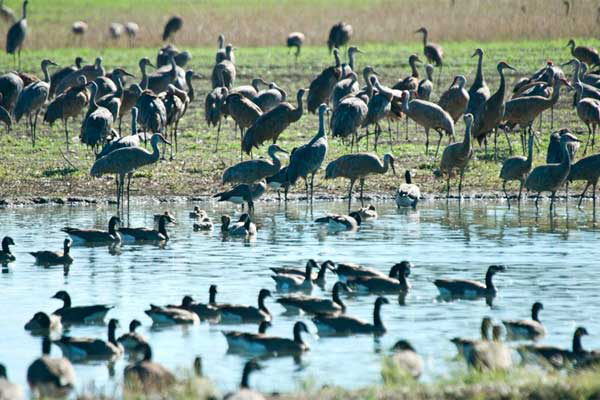Alaska: Possible entry point for N5N1 bird flu

A study, conducted by US Geological Survey [USGS] scientists, found low-pathogenic avian influenza viruses with Eurasian genes among birds in the Yukon-Kuskokwim Delta of western Alaska. This finding supports the theory that the area is a potential entry point for foreign animal diseases such as the more highly pathogenic H5N1 strain.
The Yukon-Kuskokwim Delta is an important breeding ground for many bird species and is located where multiple bird migration flyways converge, providing opportunities for avian pathogens to spread. Among these pathogens are H5N1 avian influenza, which occurs in both low-pathogenic and the more dangerous highly pathogenic forms.
After the outbreak of the highly pathogenic H5N1 strain of avian influenza in wild birds of China in 2005, the USGS and the US Fish and Wildlife Service [USFWS], in cooperation with the Yukon-Kuskokwim Health Corporation, the Kawerak Tribal Corporation and other partners, conducted 4 years of testing wild migratory birds in western Alaska for the highly pathogenic H5N1 strain.
In a paper published by the USGS and the USFWS scientists, no highly pathogenic forms of avian influenza were found in more than 24 000 samples tested from 82 species on the Yukon-Kuskokwim Delta from 2006 to 2009. However, 90 low-pathogenic strains of the virus were obtained from these Alaskan samples. Low-pathogenic avian influenza viruses are common among wild birds and do not cause mortalities to the degree often seen with highly pathogenic forms of the virus, said USGS research geneticist Andrew Reeves, lead author of the paper. The significance of this study is that it demonstrates that viruses with genes of Eurasian origin can enter North America via migratory birds.
In addition, researchers discussed how low pathogenic virus samples from birds further from Asia contained fewer genes attributable to Eurasian strains.
“This finding supports a ‘dilution-by-distance’ idea we’ve hypothesized in other studies,” Reeves said. “Birds sampled further from Asia, such as in the lower 48 United States, very rarely contain avian influenza viruses with Eurasian genes, but in Alaska they are more common.”
“Many of the bird samples used in the study were provided by subsistence hunters in 11 villages throughout the Yukon-Kuskokwim Delta who collected samples from many species, including ducks, geese, swans, and shorebirds,” said Kim Trust of the USFWS.
“Without our partners in western Alaska, we would not have the robust data set that supports the findings in this paper,” Trust said.
Reeves added that the current study provides support for retaining the Yukon-Kuskokwim Delta as a high-priority region for the surveillance of potentially harmful avian pathogens.
The paper “Genomic analysis of avian influenza viruses from waterfowl in western Alaska, USA,”












